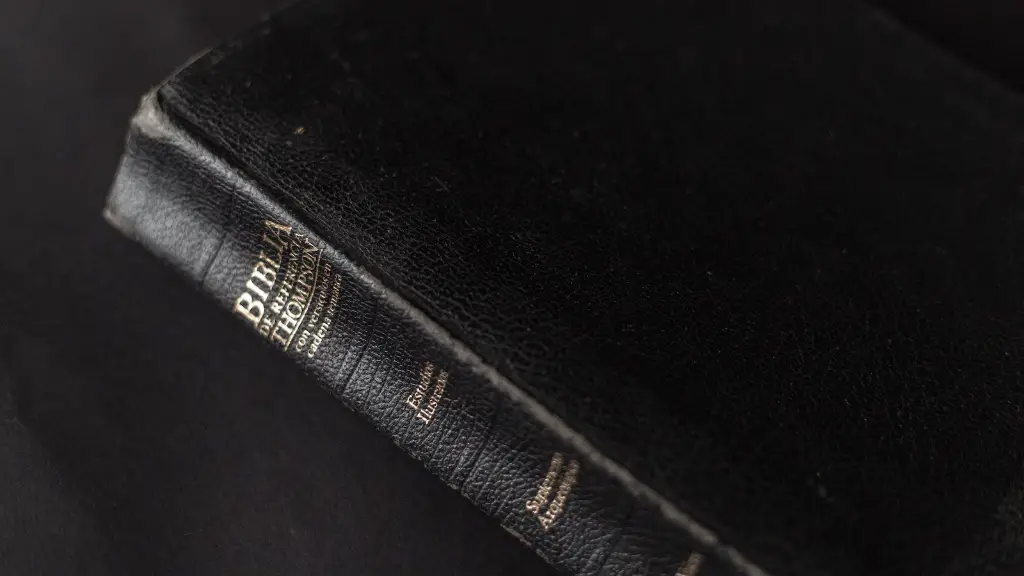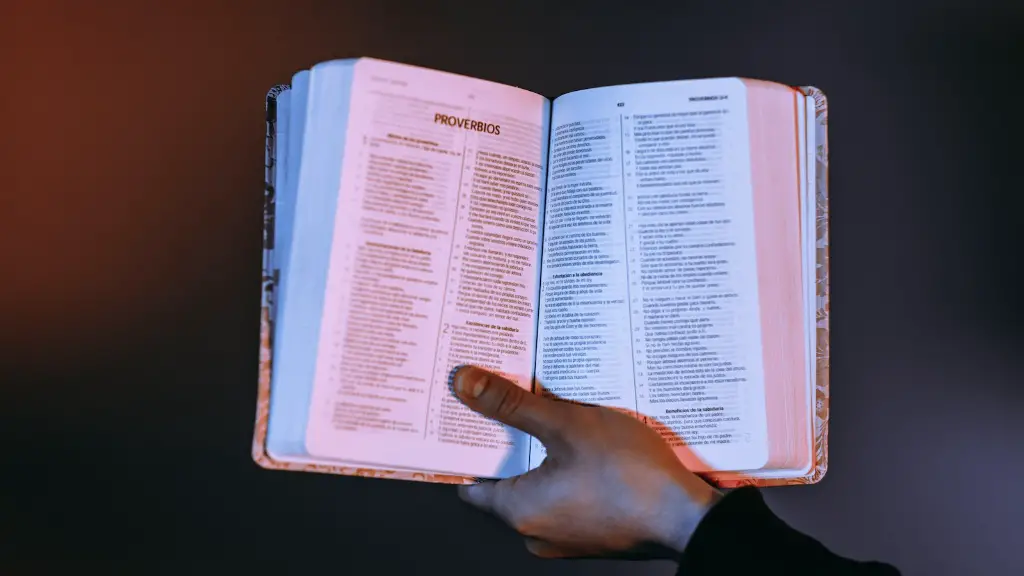A cherubim is a potent, supernatural being found in the books of the bible, most notably Isaiah, Ezekiel and Psalms. In the Bible, they are described as angels or guardians, protecting the throne of God’s power. Cherubim were first mentioned in Genesis 3:24, where God commanded them to guard the Garden of Eden and watch over the entrance to it. They were supposedly created as protectors of the Jewish people and as a symbol for God’s power and authority.
Cherubim were often depicted with the wings and body of an eagle, legs like lions and a face or head like a human. In the Old Testament, their power was demonstrated when their wings were spread to the point that their shadow eclipsed the sun. Cherubim were also described as having four faces – the face of a man, the face of a lion, the face of an ox and the face of an eagle.
The bible talks about the cherubim being placed in the Garden of Eden to protect it from human intrusions. It is also believed that they were part of the covering around the throne of God in the tabernacle and the temple. In Exodus 25:18–22, they were described as being supported by wings, decorated with gold and having a golden throne between their wings, with a cloudy figure over the top. In the New Testament, it is believed that cherubim are associated with the four living creatures of Revelation 4:6-9.
In Christianity and some other religions, cherubim represent divine knowledge, understanding and love. They often appear in art as a symbol of innocence or of God’s protective hand. They also serve as a reminder of mankind’s spiritual journey and faith in a higher power.
According to some Biblical scholars, the image of cherubim has been a source of inspiration and comfort to many. They believe that when humans look at images of cherubim, they find peace and encouragement. They argue that by appreciating the glory of God’s creatures and the divine mystery that surrounds them, it encourages people to be better and stronger versions of themselves.
Cherubim have also been used in Western art and culture throughout the years, appearing in numerous paintings, sculptures and even in video games. In the modern age, cherubim have become a popular image and even feature on jewellery, clothing and other symbolically related products.
The Bible on Cherubim
In the Bible, cherubim are frequently mentioned and appear in multiple passages. For example, in Genesis 3:24, after Adam and Eve were driven out of the Garden of Eden, an angel of the Lord guarded the garden and the entrance to it with flaming swords. In Ezekiel 10:1-15, four living creatures had a ‘form like that of a human’ and each had four faces and four wings. In 1 Kings 6:27 and 7:29, cherubim were portrayed on the walls and ceilings of the temple of God. The prophet Isaiah also mentioned them repeatedly in his famous vision of God’s throne, where he saw a magnificent throne made of a variety of materials, ranging from precious metals to living creatures. The prophet also saw a figure coming from the throne, ‘with a likeness as of a man’s hand under His wings.’
What Cherubim Symbolize
In Christianity and in some other religions, cherubim are regarded as symbols of purity as well as guardians of God’s presence and power. They also represent divine knowledge, understanding and love, reminding believers of their journey and commitment to a higher power. Additionally, many scholars believe that cherubim are a reminder of the power of faith, hope and love that lies within each of us.
In art, cherubim have been a frequent image, representing innocence and the protective hand of God. In the modern era, their influence remains and they can be found on jewelry, clothing and other symbolic products, continuing to capture people’s imaginations and inspire them to strive for spiritual growth.
Uses of Cherubim
In the western world, cherubim have been a frequent feature of art and culture, with the image appearing in numerous paintings, sculptures and even in video games. Additionally, the use of the symbol in religious texts and in the overall image of the Garden of Eden has found its way into the public consciousness. This has recently been amplified by literature and film, with the five cherubs from The Chronicles of Narnia series featuring heavily.
Cherubim’s presence even extend beyond symbolic references and religious settings. Today, the representation of the cherubim is used in diverse contexts, from fashion designs to jewelry and music. They remain one of the most recognizable symbols from Western culture, continuing to evoke a sense of childlike spirituality, awe and innocence.
Cherubim in Biblical Texts
The Bible is filled with references to cherubim, with the first mention being in Genesis 3:24. Here, God commanded them to guard the Garden of Eden and watch over the entrance to it. However, they also appeared in other passages such as Exodus 25:18-22, 1 Kings 6:27 and 7:29, Ezekiel 10:1-15 and Isaiah’s famous vision of God’s throne. In every case, the texts alluded to their immense power, as well as their duty to protect the Jewish people and act as symbols for God’s power and authority.
Significance Of Cherubim
Cherubim, as described in the Bible, carry powerful messages. Their presence in the Garden of Eden is seen as an example of God’s protective hand, providing guidance and security to his people and exemplifying power through strength. In scripture, the depictions of cherubim are seen as generally positive and powerful, helping believers to appreciate the glory of God’s creatures and the importance of faith and commitment.
In the modern world, their influence can be felt through the wide range of spiritual and artistic products that feature the symbol. From jewellery to clothing and even video games, cherubim continue to captivate the imaginations of people to this day and provide inspiration and encouragement to those who seek it.
Cherubim in Art
The image of the cherub has been a source of artistic inspiration for centuries. Cherubim can be found in Renaissance works, Baroque pieces and Romantic paintings. Among the best-known works to feature cherubim are Paolo Veronese’s ‘Festival of the Law’, Jacopo Tintoretto’s ‘Adoration of the Shepherds’ and Peter Paul Rubens’ ‘Raising of the Cross’.
Recently, cherubim have also received refreshing depictions in modern art and illustration. Similarly to the past they have been used in sculptures, paintings and other presents of art to represent divine knowledge, understanding and love. These modern cherubim are often found in the form of contemporary drawings, with illustrators using them to create powerful, symbolic art pieces that communicate a sense of hope, guidance and faith.
Cherubim in Popular Culture
In recent years, cherubim have featured heavily in popular culture, particularly in video games and bronze works. They are a frequent feature in video games, with the Lootbox quest from the Elder Scrolls series containing cherubim as the reward. They have also been used in many bronze and other forms of sculpture, such as the cherub garden sculptures found in the gardens of many churches and other religious buildings.
They are also featured prominently in works of fiction, with the five cherubs from The Chronicles of Narnia series being popular in the Christian community. Overall, cherubim can be seen as an example of how, through literature and art, religious symbols can proliferate in our popular culture and remain meaningful to many believers.




